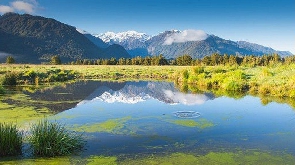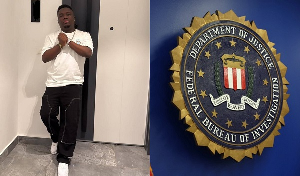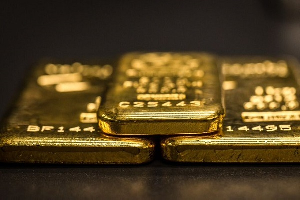E take scientists 375 years to discover di eight continent of di world, wey bin hide for open all along.
But mysteries about di land mass still dey miss.
For 2017, one group of geologists bin make headlines wen dem announce say dem don discover one continent dem call Zealandia - Te Riu-a-Māui for di Māori language.
Zealandia na very big continent of 1.89 million sq miles (4.9 million sq km) e dey around six times di size of Madagascar.
Although world encyclopaedias, maps and search engines bin dey of di position say na only seven continents dey Di team wit confidence inform di world say dia position no correct.
Dem later confam say na di eight continent dey. Dis latest addition don break all di records.
Zealandia na di smallest, thinnest, and youngest continent for di world. Wetin dey interesting about dis na say 94% of di continent dey under water, di remaining small part na islands, e be like New Zealand, wey come out from im oceanic depths.
All dis time, dis continent bin dey hide for open.
"Dis na example of how something wey dey for open fit take time to discover," Andy Tulloch, one geologist for di New Zealand Crown Research Institute GNS Science, wey be part of di team wey discover Zealandia tok.
But dis na just di beginning. Four years on and di continent still dey as mysterious as ever, im secrets jealously guarded under 6,560 ft (2km) of water. How dem take form am? Wetin live dia? And how long e don dey underwater?
A difficult discovery
In fact, Zealandia don always dey difficult to study.
More dan one century afta Tasman discover New Zealand for 1642, dem send di British map-maker James Cook on one scientific voyage go di southern hemisphere.
Di official instructions dem give am na to observe how Venus take dey pass between di Earth and di Sun, so dat dem go fit calculate how far di Sun take far reach.
But dem also give am one sealed envelope, wey dem tell am say make e open wen e don complete di first task.
Dis envelope bin contain one top-secret mission and na to discover di southern continent.
Na one Scottish naturalist Sir James Hector, bin first gada di first real clues of Zealandia existence, wen e do one journey to series of islands wey dey di southern coast of New Zealand for 1895.
Afta e study dia geology, e conclude say New Zealand na "di part of wetin remain of one mountain-chain wey form di crest of a great continental area wey dey stretched far go di south and east, and now dey submerged…".
Even wit dis early breakthrough, di knowledge of one possible Zealandia no still dey much, and na very little happun until di 1960s. "Things happun slowly for dis field," Nick Mortimer, one geologist for GNS Science wey lead di 2017 study tok.
Den for di 1960s, geologists finally agreed on a definition of wetin be continent – broadly, na geological area wey get high elevation, plenty different kind of rocks, and a thick crust. E gatz also dey big. "No be sometin wey fit dey small," Mortimer tok.
Dis one give geologists something to work wit – if dem fit collect di evidence, dem fit prove say di eighth continent dey real.
For 1995, American geophysicist Bruce Luyendyk again bin describe di region as continent and e suggest say make dem call Zealandia.
Around di same time, di "United Nations Convention on di Law of di Sea" bin come into force and dat finally provide serious motivation. E state say di kontris fit extend dia legal territories beyond dia Exclusive Economic Zone, wey reach 200 nautical miles (370km) out from dia coastlines, to claim dia "extended continental shelf" – wit all di mineral riches and oil wey dey for dia.
Di final flourish come from satellite data, wey dem fit use track tiny variations for di Earth gravity across different parts of di crust to map di seafloor.
Wit dis technology, Zealandia show clearly as one twisted large area wey dey almost as large as Australia.
Wen dem finally unveil di continent to di world, e unlock one of di most sizeable maritime territories in the world. "E dey kind of cool," Mortimer tok, "If you think about am, evri continent on di planet get different kontris on am, [but] na only three territories dey on Zealandia."
A mysterious stretching
Zealandia originally bin dey part of di ancient supercontinent of Gondwana, wey dem form about 550 million years ago.
E occupy one corner for di eastern side, wia e share border wit several odas, including half of West Antarctica and all of eastern Australia.
Then around 105 million years ago, "sake of something we neva completely understand yet, Zealandia begin pull away", Tulloch tok.
Continental crust dey usually dey around 40km deep – e thick pass oceanic crust, wey dey around 10km. Sake of say dem too stretch am, Zealandia crust now dey only extend 20km (12.4 miles) down. Eventually, di wafter-thin continent bin sink – though no be to di level of normal oceanic crust – and later disappear go under di sea.
Even though say e dey thin and e go under water, geologists know say Zealandia na continent because of di kinds of rocks dem see for there.
Continental crust dey made up of igneous, metamorphic and sedimentary rocks – like granite, schist and limestone, while di ocean floor dey usually just made of igneous ones such as basalt.
Plenty tins still dey wey di geologists no know. Dem no sabi di origin of di eighth continent. E neva still dey clear how Zealandia bin manage to stay togeda as e dey very thin and e neva scata into tiny micro-continents.
Anoda mystery na wen exactly Zealandia bin end up underwater – and weda e even get parts wey be dry land.
Di parts wey currently dey above sea level get ridges wey form as di Pacific and Australian tectonic plates wey crumble togeda.
Dis don also raise di question of wetin bin live there
Wit im mild climate and 39 million-sq-mile (101 million-sq-km) range, Gondwana itself na home to plenty kind of flowers and animals, wey include di first four-limbed land animals and later, plenty of di largest to ever live – di titanosaurs.
Although e no dey possible to collect remnants from di seafloor of Zealandia directly, scientists don dey drill di depth. "Actually di most helpful and distinctive fossils na di ones wey form for di very shallow seas," Sutherland tok. "Becos dem leave record – say zillions and zillions of tiny, tiny little fossils wey dey very distinctive dey for there."
For 2017, one team bin do di most extensive surveys of di region so far, and dem drill down more dan 4,101ft (1,250m) into di seabed for six different sites. Di cores wey dem collect bin contain pollen from land plants, plus spores and di shells of organisms wey live for warm, shallow seas.
A (literal) twist
Anoda mystery wey dey for di eight planet na Zealandia shape.
"If you look di geological map of New Zealand, two things dey wey really stand out," Sutherland tok. One of these na Alpine Fault, one plate boundary wey run along di South Island and e dey so significant, you fit see am from space.
Di second na di geology of New Zealand – as well as dat of di wider continent – e dey oddly bent. Di two of dem divide by horizontal line, which na wia Pacific and Australian tectonic plates meet.
For dis exact point, e look like pesin don take di lower half and twist am away, so dat no be only di previously-continuous ribbons of rock no longer line up, but dem almost dey at right angles.
Sutherland explain say e no sure say di continent go give up all im secrets anytime soon. "E dey hard to make discoveries, wen everything dey 2km (1.2 miles) underwater, and di layers you go need to take do sample dey 500m (1,640ft) beneath di seabed too," e tok. "E dey really challenging to go out and explore a continent like dat. E take lot of time, money and effort to go out and ship and survey regions."
If nothing else, di world eighth continent surely show say – nearly 400 years plenty tins still dey to discover.
BBC Pidgin of Saturday, 30 September 2023
Source: BBC
















